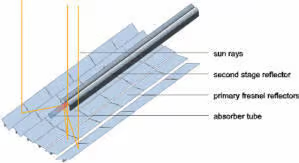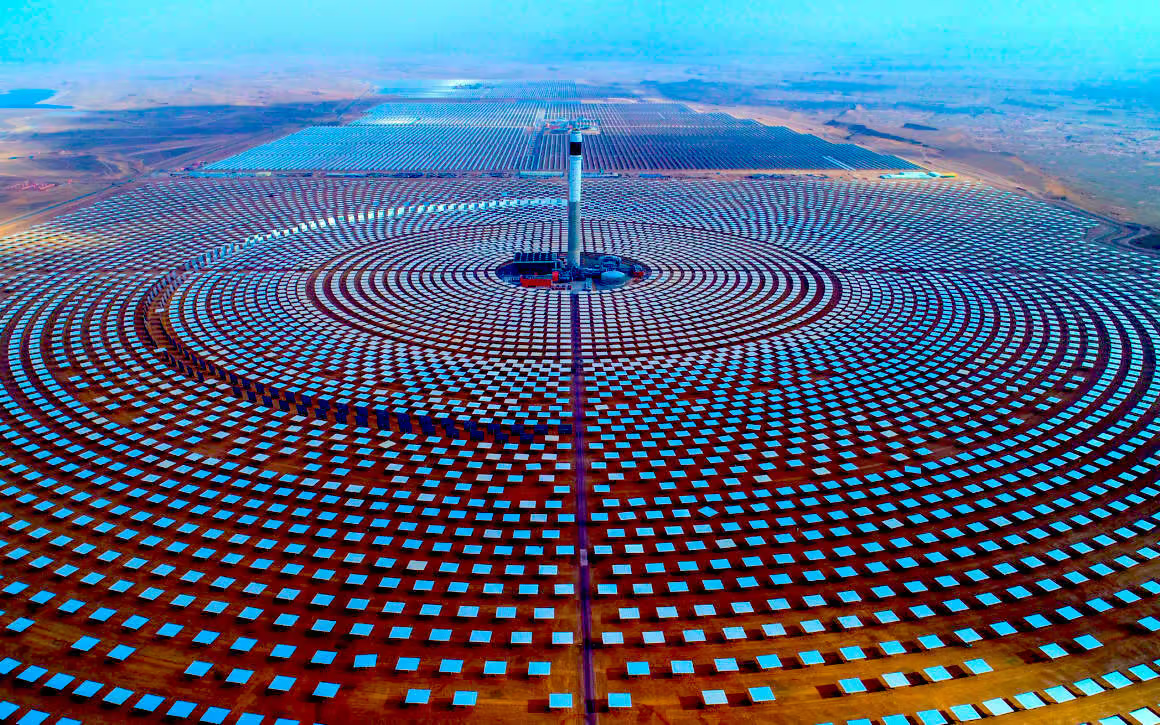As the world transitions towards cleaner energy sources, Concentrated Solar Power (CSP) has emerged as a viable solution to harness the sun’s energy. CSP technology utilizes mirrors or lenses to focus sunlight onto a small area, generating heat that can produce electricity or provide thermal energy for industrial processes. This article explores the different types of CSP systems, their benefits, and notable examples, shedding light on how this innovative technology is shaping the future of renewable energy.
Understanding Concentrated Solar Power
CSP systems work by using a mirror configuration to concentrate sunlight onto a receiver, which converts the sunlight into heat. This heat is then used to create steam that drives a turbine to generate electricity. Unlike traditional solar photovoltaic (PV) systems, which convert sunlight directly into electricity, CSP systems store thermal energy, allowing them to provide power even when the sun isn’t shining.
Types of CSP Technologies
CSP technologies can be categorized into four main types: Tower CSP, Trough CSP, Linear Fresnel Systems, and Parabolic Dish Systems. Each of these technologies employs different methods to collect and utilize solar energy.
- Tower CSPTower CSP, also known as central receiver systems, utilizes sun-tracking mirrors called heliostats to focus sunlight onto a receiver mounted at the top of a tower. This system can achieve higher temperatures—up to around 600ºC—and is efficient for large-scale electricity generation. The heat transfer fluid, typically a molten salt, circulates through the receiver, absorbing heat and then generating steam to drive a turbine.
Example: The NOOR I, II, III solar project in Ouarzazate, Morocco, is one of the largest CSP installations in the world, showcasing the effectiveness of tower CSP technology.
- Trough CSPThe most widely used CSP technology, Parabolic Trough Systems consist of parabolic-shaped mirrors that focus sunlight onto a receiver pipe. The heat transfer fluid flows through this pipe, increasing in temperature from about 293ºC to 393ºC, and is then used in a conventional steam generator to produce electricity.
Example: The Ivanpah Solar Electric Generating System in California utilizes parabolic trough technology, demonstrating the capacity for large-scale solar power generation.
- Linear Fresnel Systems

Similar to parabolic trough systems, Linear Fresnel Systems employ flat mirrors to reflect sunlight onto a receiver positioned above. These systems can also incorporate thermal energy storage, providing flexibility in energy generation during periods of low sunlight.
Example: The Crescent Dunes Solar Energy Project in Nevada showcases the application of linear Fresnel technology combined with thermal storage, enabling it to deliver power even after sunset.
- Parabolic Dish SystemsParabolic Dish Systems consist of a parabolic-shaped concentrator that reflects solar radiation onto a receiver at the focal point. These systems typically utilize a two-axis tracking system to follow the sun throughout the day, optimizing energy collection. The collected heat can be converted into electricity using engines such as Stirling or Brayton cycle engines.
Example: The Solar Two project in California implemented a parabolic dish system, successfully demonstrating the technology’s ability to generate power efficiently.
The Importance of Thermal Energy Storage
A critical feature of CSP technology is its ability to incorporate thermal energy storage. By storing heat generated during sunny periods, CSP systems can provide dispatchable power, making them a reliable source of renewable electricity. This capability enhances grid stability, particularly in regions with high solar potential but intermittent cloud cover or nighttime conditions.
Benefits of Thermal Energy Storage in CSP
- Dispatchability: The ability to store thermal energy allows CSP systems to generate electricity on demand, similar to fossil fuel plants, but without emissions.
- Grid Stability: CSP with thermal energy storage can help stabilize the grid by providing a reliable power source during peak demand periods or when other renewable sources are unavailable.
- Reduced Fossil Fuel Dependency: By integrating thermal storage, CSP systems can reduce the reliance on fossil fuels for backup power, contributing to a more sustainable energy mix.
- Economic Benefits: The dispatchable nature of CSP can lead to reduced energy costs, as it allows for better integration with existing power plants and the ability to provide power during high-demand periods.
The Role of Regulations in CSP Development
Recognizing the importance of thermal energy storage, various countries have begun to regulate its inclusion in CSP projects. For instance, a recent regulation in China mandates that all new CSP projects incorporate thermal energy storage, ensuring that this crucial technology is prioritized on the grid.
Example: The Ivanpah Project
The Ivanpah Solar Electric Generating System, completed in 2013, was one of the last large CSP projects built without thermal energy storage. While it has a substantial generation capacity, its lack of storage capabilities made it less effective during periods of low solar radiation. This has prompted developers to focus on incorporating thermal storage in subsequent projects, leading to more efficient and reliable CSP solutions.
Advancements in Heat Transfer Fluids
Recent research into Gen3 heat transfer technologies is exploring alternative materials that can withstand even higher temperatures, enabling CSP systems to provide high-temperature direct heat for industrial processes. These advancements not only enhance the efficiency of CSP systems but also open up new opportunities for utilizing solar energy in diverse applications.
Example: Solar Thermochemistry
One exciting application of CSP technology is in solar thermochemistry, where concentrated solar energy is used to drive chemical reactions, producing solar fuels. This approach holds the potential to create sustainable energy sources, such as hydrogen, which can be stored and utilized as a clean fuel.
Conclusion
Concentrated Solar Power (CSP) represents a significant advancement in the pursuit of renewable energy solutions. With various technologies such as Tower CSP, Trough CSP, Linear Fresnel Systems, and Parabolic Dish Systems, CSP harnesses the sun’s energy efficiently and sustainably. The ability to incorporate thermal energy storage further enhances the dispatchability and reliability of CSP, making it a vital component of the global energy landscape.
As countries continue to invest in renewable energy infrastructure, the role of CSP will only grow. With examples like the NOOR and Ivanpah projects, it is clear that CSP technology is not just theoretical; it is a practical solution that can contribute to a sustainable energy future. By leveraging advancements in heat transfer fluids and thermal storage, CSP is poised to play a critical role in reducing our reliance on fossil fuels and achieving a greener, more sustainable world.




